Chris Reed’s AFI DOCS 2018 Top Five (No Wait, Top Six! … or … Top Seven!)
Written by: Christopher Llewellyn Reed | June 23rd, 2018

As I did last year, for the 2017 AFI DOCS festival, I here present my overview coverage* of AFI DOCS 2018, which ran June 13-17 in our nation’s capital. Once again, the American Film Institute (AFI) presented a massive showcase of documentaries from around the globe – this time, 92 films from 22 countries, to be exact – and though I was only able to catch a fraction of them, I was impressed by the quality of most of what I saw. If only one had no limits on time …
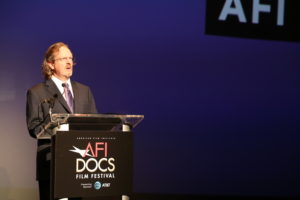
As the AFI’s website states, the institute “was founded in 1967 as a national arts organization to train filmmakers and preserve America’s vanishing film heritage.” AFI DOCS proclaims, on its own site, that it is “the only film festival in the United States that offers the unique opportunity to connect film audiences with national opinion leaders, filmmakers and intriguing film subjects.” Founded in 2003 as Silverdocs, the festival rebranded itself in 2013 as AFI DOCS. 15 years after its initial start-up, it is very much still going strong. As a result, it has been hard to whittle down my favorites to a mere top five, so I am cheating with a top six … scratch that, a top seven … and could do more than that (I also liked my runners-up a lot).

As per the usual, films were screened in Silver Springs (at the AFI Silver Theatre) and in adjacent Washington, DC (mostly at the Landmark E Street Cinema, but at other venues about town, as well). This time, I stuck to DC, though I have nothing against the Silver (in fact, I like it a lot). All told, I saw 16 new films, and had previously seen 4 at other festivals, for a total of 20. For once, I have only included among my favorites those that I saw for the first time at AFI DOCS, even if I equally loved the films from earlier festivals (I note those movies after the main list).
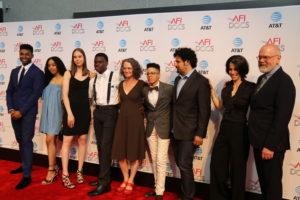
I did not attend this year’s Guggenheim Symposium, whose honoree, Steve James, I nevertheless interviewed for my documentary-themed podcast The Fog of Truth (stay tuned for the release of an episode devoted to him and his work). I did, however, watch some of the VR (virtual reality) films, since I try to keep track of developments in this new moving-image medium, and interviewed Laura Wexler (who, in the interest of full disclosure is my neighbor in Baltimore), the co-writer of one of them, entitled Dinner Party. For a capsule review of that project, check out my overview of the 2018 Tribeca Film Festival, where I first saw it. Though I interviewed her for my podcast, I’ll lead off my coverage of AFI DOCS 2018 with a very brief excerpt from that interview, before getting to my top five (no wait, top six! … no wait … top seven!).
VR: Excerpt from Laura Wexler Interview
To start, here is a shorter version of my Tribeca review.
Dinner Party, directed by Angel Manuel Soto and written by Charlotte Stoudt and Laura Wexler, is a work of docudrama (“docu,” that is, provided one believes in the truth of the source material). We start above a conventional early 1960s house, surrounded by a spectral shimmer, then settle into the living room/dining room combo as a sweet married couple attend to their four guests. Suddenly, a broken dish and the sounds from an LP on the record player lead to a disturbing flashback where our hosts, Betty and Barney Hill, recall what they claim was an alien abduction. Truth, fanciful imaginings or the manifestation of outright psychosis, Dinner Party is pure virtual cinema, immersing us completely in the terror of the unknown.
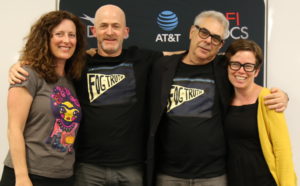
Film Festival Today: Laura, how did you come across the source material for your story, and what made you want to do it as VR, rather than as a traditional film?
Laura Wexler: So, the way my writing partner and I learned about the Betty and Barney Hill case, which is what Dinner Party is based on, was in doing research into potential real-life psychiatric cases for a TV pilot we wrote. The pilot was based on the true story of a Johns Hopkins experiment in the 1960s to convert housewives into therapists. We went down various rabbit holes researching potential psychiatric cases that could present at the housewives’ clinic. And, as often happens, that was bought and never made, so we sort of plundered the wreckage of our own piece to see what could have another life. At the same time, we were both getting interested in VR and we started thinking about what pieces would be good for VR, and also what would be the way to tell Betty and Barney’s story. Those two questions kind of came together. What is more native to VR than an alien abduction? It’s immersive, it’s individual, it’s ineffable: all these things that VR is, and so for us this was a perfect story to tell in VR.
And now, on to my Top 7 (in alphabetical order) …
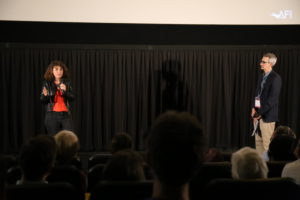
209 rue Saint-Maur, Paris, 10ème – The Neighbors (Ruth Zylberman, 2017) [the paragraph, below, is an adaptation of a longer review I wrote for Hammer to Nail, which has yet to post, as of this writing]

A film that starts small and ends with a powerful, cathartic bang, 209 rue Saint-Maur, Paris, 10ème – The Neighbors, from French filmmaker Ruth Zylberman (La force des femmes), gathers dramatic weight with each successive stratum of detail layered on top of its carefully prepared historical foundation. Zylberman follows the fraught life journeys of 1930s Jewish inhabitants of a residential building in Paris, pursuing all possible leads to discover who ended up where and when, from those who died in concentration camps to those still alive today. It’s a story all the more effective for the time it takes to build its narrative, catching viewers almost unawares as it propels them towards its profound conclusion. Zylberman’s goal is to evoke the time and place before tragedy struck – in the form of the German invasion of the French capital – destroying that on which she has based her careful reconstructions. Remembrance is the key to undoing the horrors of genocide. Honor the dead by shining a light on even the most quotidian aspects of their lives. Fortunately, it’s not all bleak, as we end with a reunion, at the titular address, of survivors and descendants. A bittersweet conclusion, perhaps, but with emphasis more on the sweet side.
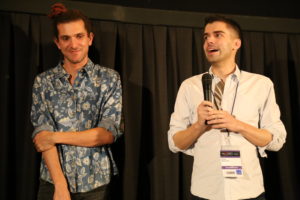
América (Erick Stoll/Chase Whiteside, 2018) [the paragraph, below, is an adaptation of a longer review I wrote for Hammer to Nail, which has yet to post, as of this writing]

What would you do if your 93-year-old grandmother needed help, unable to care for herself? Would you abandon her, institutionalize her, pay for home care? In América, the debut documentary feature from co-directors Erick Stoll and Chase Whiteside, we find out what three brothers in Colima, Mexico, do when confronted with this particular challenge. After their father – himself a senior citizen – is arrested for elder abuse, having allowed his mother to lie in her own filth, neglected, they drop whatever they are doing, move back home and collectively minister to their abuela, the titular América. Though they make mistakes, and one could easily find fault with some of their methods, they are a (mostly) shining example of the better instincts of the human animal, and this film is a loving tribute to them and to the woman they love. This is impressive filmmaking, exhaustively observational in its approach and emotionally bracing in its intensity.
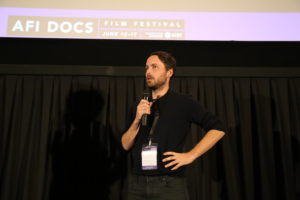
The Distant Barking of Dogs (Simon Lereng Wilmont, 2018) [the paragraph, below, is an adaptation of a longer review I wrote for Hammer to Nail, which has yet to post, as of this writing]
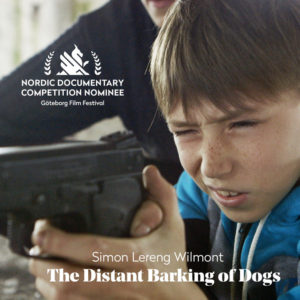
In a world as riven by military and political conflicts as ever, it can be easy – if we, ourselves, are far from the fray – to read headlines and focus on the primary actors of these real-life dramas, forgetting about the ordinary folks stuck dealing with the consequences. They become mere abstractions in the fog of war. Fortunately, Danish director Simon Lereng Wilmont (Traveling with Mr. T), with his new documentary The Distant Barking of Dogs, trains his lens squarely on one family, living just a mile from the frontline of a major ongoing skirmish – the Russian invasion of Ukraine – reminding us of the very human cost behind national disputes. Filled with beautiful shots of nature, animals and people, all in opposition to the struggle for survival, the film serves as a clarion call to the rest of us to not ignore this particular tragedy. Hard as the reality may be to face, Wilmont’s gentle presentation of the details of the story make his movie easy to watch, if also profoundly sad. And watch it we must, as a reminder of what is lost when armies clash. The penultimate scene, of a grandmother and grandson, sitting side by side, framed by a sunset, evokes an idyll that is no more. Dogs bark, guns fire, people suffer. Such is the human condition.

For the Birds (Richard Miron, 2018) [the paragraph, below, is an adaptation of a longer review I wrote for Hammer to Nail]
Director Richard Miron’s new documentary For the Birds starts with an archival video – captured 10 years before the movie’s main action begins – of married couple Kathy and Gary Murphy playing with a rescued duckling. It’s a cute bird, and Kathy, especially, seems quite taken with it. Flash forward to the post-prologue now, and the Murphys are overrun with avian pets of all kinds: (more) ducks, geese, chickens, roosters and turkeys. Kathy Murphy is a hoarder, you see; a bird hoarder, to be exact, something that the animal sanctuary in Wawarsing, New York – where the Murphys live – has never seen before. Unfortunately, while her love for her charges is obvious, she is unable to offer them the proper care they need to be healthy, and when someone calls in the SPCA, that organization begins a rescue operation that provokes a conflict not just between Kathy and her local community, but between wife and husband, as well. Set to a soundtrack of clucks, gobbles, honks, quacks and cock-a-doodle-doos (a lot of cock-a-doodle-doos), For the Birds succeeds brilliantly in spreading our sympathies across all parties and perspectives, dividing our loyalties up to the very end. This is observational cinema at its very best.
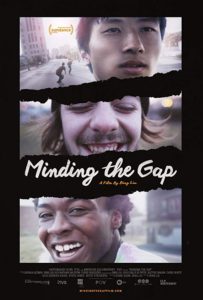
Minding the Gap (Bing Liu, 2018) [the paragraph, below, is an adaptation of a longer review I wrote for Hammer to Nail]
A penetrating, complex exploration of friendship, compassion, personal growth and the lack thereof, as well as of the therapeutic power of – and here’s the kicker – skateboarding as a salve for what ails the dispossessed and disaffected, Minding the Gap marks an auspicious debut for director Bing Liu. The documentary follows three young men – one of them Liu, who also shot the footage, past and present – from childhood to twentysomething maturity as they navigate both challenges and opportunities. Beyond Liu – let’s call him by his first name from now on, since he’s also a subject – there’s also Keire and Zack. Together, they make a trio that is both racially diverse (Bing is Asian-American, Keire is African-American and Zack is white) and diverse in behavior and outcomes. They’re all terrific skaters, however, and one of the great joys of the movie is watching them on their boards, masters of their craft. It’s like a combination of Stacy Peralta’s Dogtown and Z-Boys and Richard Linklater’s Boyhood, while also uniquely its own marvelous thing.
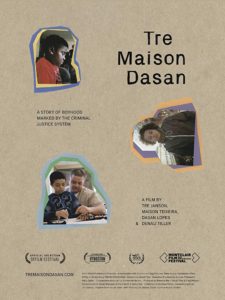
Tre Maison Dasan (Denali Tiller, 2018) [the paragraph, below, is an adaptation of a longer review I wrote for Hammer to Nail, which has yet to post, as of this writing]
From first-time documentary-feature director Denali Tiller comes a heart-rending portrait of three boys whose parents, when the film begins, are all incarcerated. Aged 13 (Tre), 11 (Maison) and 6 (Dasan), they come from different-enough backgrounds – and are, themselves, quite distinct the one from the other – that their outcomes, by the end, are far apart, but the similarity in starting points makes for a fascinating and deeply touching cinematic journey. Jail time affects not only those imprisoned, but also their family members, especially children, and whatever the initial crime that led to conviction, innocent people pay the price, as well. It’s a remarkable film, powerful in its emotional content and profound in its criticism of a system that sets the next generation up for failure. Nonfiction filmmaking doesn’t get much better than this.

Yours in Sisterhood (Irene Lusztig, 2018) [the paragraph, below, is an adaptation of a longer review I wrote for Hammer to Nail, which has yet to post, as of this writing]
From director Irene Lusztig (The Motherhood Archives) comes a vibrant new documentary, Yours in Sisterhood, about the early days of Ms. Magazine, the pioneering feminist publication founded in 1971 by Gloria Steinem and Dorothy Pitman Hughes. Actually, it’s about a lot more than that, but takes as its departure point some of the many unpublished letters to the editor written during the magazine’s first decade, using them to examine America’s fraught relationship to women’s rights at that time (when has that relationship not been fraught?). This was the period of second-wave feminism, and Ms. spoke to a lot of women struggling to find their agency as independent individuals. As such, the movie is a powerful exploration of female empowerment in our society, using the past to meditate on our present.
The films I had seen at other festivals, before, that played at AFI DOCS, as well, and which I also find exceptional, are: Charm City (Tribeca), The Gospel of Eureka (SXSW) and On Her Shoulders (SXSW). And now here are my runners-up, and the difference between how I feel about them and my top choices is minor: The Cold Blue, Dark Money, Hal, Love, Gilda, The Silence of Others, United We Fan and Witkin & Witkin.
And that’s it for my report. I hope to return again next year. Will you join me?

*My colleague Jay Berg will soon post his own list of favorite films from AFI DOCS, so get ready for another report on more great films!

